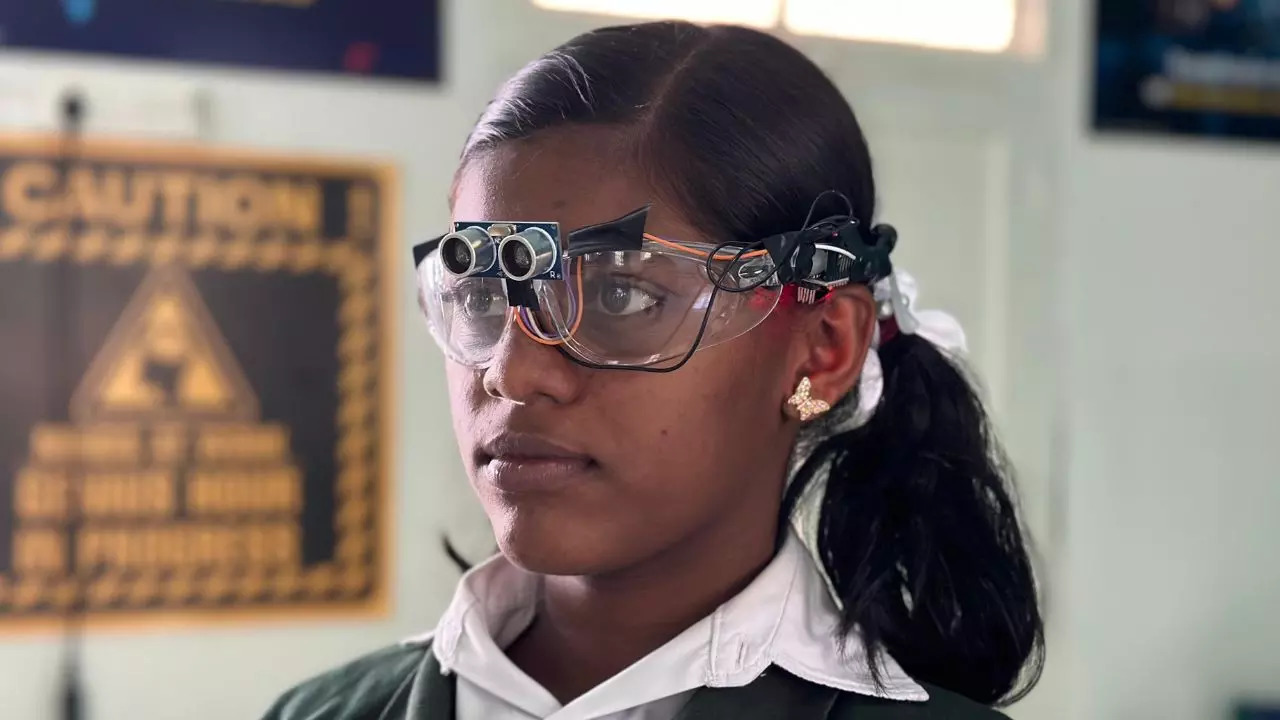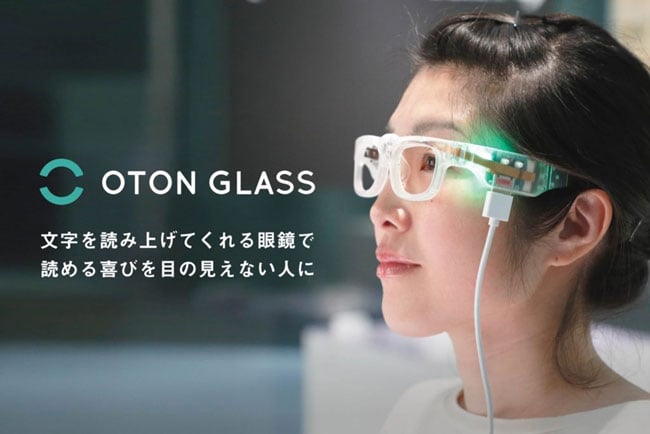How Smart Glasses for the Visually Impaired Are Revolutionizing Daily Life
How Smart Glasses for the Visually Impaired Are Revolutionizing Daily Life
Blog Article
Empowering Self-reliance With Assistive Modern Technology for the Blind
The combination of assistive innovation for individuals that are visually impaired or blind represents a considerable advancement in promoting self-reliance and enhancing top quality of life. With a variety of devices-- from display visitors to cutting-edge responsive tools-- these modern technologies not just promote navigation and interaction yet additionally advertise social addition and involvement in various facets of life. As we discover the varied kinds of assistive tools and their real-world applications, it becomes clear that the impact is profound. Yet, the advancement of this innovation raises vital questions about accessibility and future developments that warrant further examination. Assistive technology for the blind.
Recognizing Assistive Innovation
Although assistive innovation has developed substantially for many years, its basic purpose remains the very same: to enhance the high quality of life for individuals with handicaps, specifically those that are blind or aesthetically impaired. This modern technology incorporates a broad series of devices and tools that assist in independence and capability in daily tasks.
Assistive modern technology can be categorized into low-tech and high-tech solutions, each made to meet certain demands. State-of-the-art gadgets usually include software applications, specialized equipment, and flexible tools that use innovative innovation to provide assistance in various contexts. Conversely, low-tech remedies might entail daily items that are customized to enhance accessibility, such as magnifiers or responsive markers.
The assimilation of assistive technology right into the lives of individuals that are blind or aesthetically harmed not only advertises freedom but additionally promotes social incorporation and engagement in academic and specialist settings. By leveraging these technologies, individuals can browse their environments, gain access to details, and connect properly, thereby boosting their overall high quality of life. Recognizing assistive technology is crucial for caregivers, professionals, and advocates that intend to support people in optimizing their possible and achieving greater self-reliance.
Kinds Of Assistive Instruments
Assistive tools for the aesthetically impaired and blind are vital devices that improve daily living by dealing with details obstacles encountered by users. These tools can be extensively categorized into 3 main types: optical devices, electronic devices, and sensory devices.

Sensory gadgets, such as Braille screens and tactile maps, provide alternate methods to obtain info. Braille shows convert electronic message right into Braille, making it possible for users to check out with touch. Tactile maps use spatial understanding through increased lines and textures, allowing for better environmental recognition.
With each other, these assistive tools encourage people with aesthetic problems to engage even more totally with their environments, advertising greater freedom and confidence in daily activities.

Effect on Every Day Life
The assimilation of assistive technology right into the day-to-day lives of individuals who are blind or visually impaired significantly boosts their capability to communicate and browse with the world around them. Instruments such as screen readers, Braille displays, and mobile applications help with accessibility to info, permitting individuals to involve with electronic content, communicate successfully, and handle everyday jobs independently.
Additionally, modern technologies like clever glasses and navigating apps provide real-time aid in unknown settings, improving movement and confidence. These tools enable individuals to identify challenges, reviewed signs, and even recognize faces, hence fostering a sense of freedom in public spaces. Furthermore, home automation systems, which can be managed through voice commands, enable individuals to manage their living environments better, improving comfort and safety.
The influence of assistive innovation extends beyond sensible jobs; it advertises social incorporation and psychological wellness. By linking the space between individuals and their environments, these technologies equip customers to participate completely in community activities, pursue instructional possibilities, and participate in purposeful relationships. Eventually, the improvement of assistive modern technology is important in redefining the opportunities for people that are blind or visually damaged, resulting in a much more inclusive and obtainable society.
Success Stories and Reviews

An additional powerful testimonial originates from Mark, a recent college grad who utilized display reading software application throughout his academic trip. This technology allowed him to gain access to course products and take part in discussions, inevitably leading to his successful change right into the labor force. Mark debts assistive modern technology for encouraging him to achieve his career objectives, highlighting its duty in leveling the having fun field for individuals with visual problems.
Furthermore, recreation center have reported increased engagement in their programs many thanks to the intro of accessible digital platforms. These platforms have actually made it less complicated for people to attach, share sources, and assistance one another. These success tales jointly highlight the profound result of assistive modern technology in fostering freedom, enhancing lifestyle, and breaking down obstacles for the blind and aesthetically impaired area.
Future Fads in Assistive Technology
Arising modern technologies are positioned to transform the landscape of assistive technology for people that are blind or visually impaired. Technologies in expert system (AI) and machine knowing are improving the capacities of tools, making it possible for more user-friendly customer experiences. AI-driven applications are significantly able to review and acknowledge objects text aloud in real-time, giving customers with beneficial information concerning their environments.
In addition, innovations in wearable innovation are producing new chances for freedom. Smart glasses equipped with augmented truth attributes can overlay crucial information onto the individual's field of view, helping with navigation and interaction with the environment. Additionally, the integration of Internet of Points (IoT) tools is simplifying accessibility in smart homes, permitting users to control appliances and receive alerts through voice commands or responsive interfaces.
The advancement of braille display screens and responsive responses systems is additionally on the surge, promoting accessibility to digital web content and improving interaction. As these modern technologies remain to advance, they promise to boost day-to-day living, helpful resources educational chances, and employment potential customers for individuals with visual problems. Constant cooperation between engineers, individuals, and campaigning for teams will be necessary in ensuring these technologies satisfy the needs of the neighborhood successfully.
Final Thought
In conclusion, assistive modern technology plays an essential role in boosting the independence of people who are blind or aesthetically impaired. By providing vital tools and sources, these modern technologies assist in improved communication, navigation, and accessibility to info, therefore fostering freedom and self-esteem. The transformative impact of assistive gadgets not just promotes efficient interaction with the environment but likewise motivates social incorporation and engagement in various aspects of life, eventually equipping individuals to prosper within their areas.
The integration of assistive innovation for people who are aesthetically impaired or blind represents a substantial development in promoting freedom and enhancing high quality of life.The combination of assistive modern technology into the lives of people that are blind or visually harmed not only promotes autonomy but also promotes social addition and engagement in academic and specialist atmospheres. Inevitably, the advancement of assistive technology is crucial in redefining the opportunities for people who are blind or visually damaged, leading to an extra comprehensive and accessible weblink society.
Several people that are visually damaged or blind have shared inspiring success stories that highlight the transformative effect of assistive technology on their lives.In verdict, assistive innovation plays a pivotal function in improving the self-reliance of individuals who are visually impaired or blind.
Report this page